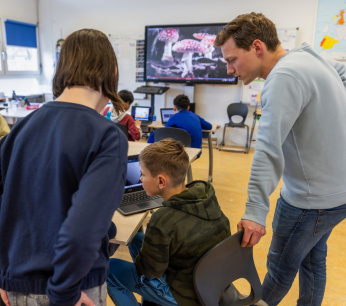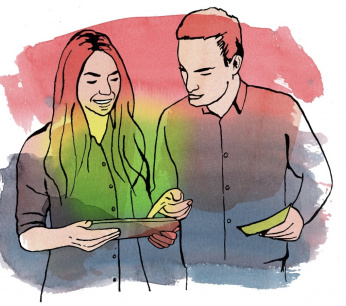Regional: shrinking so-schools, growing reserves
Since 2014, thousands of pupils have disappeared from special (secondary) special education and special primary education in parts of the country. The responsible regional partnerships are generally well in the financial reserves.
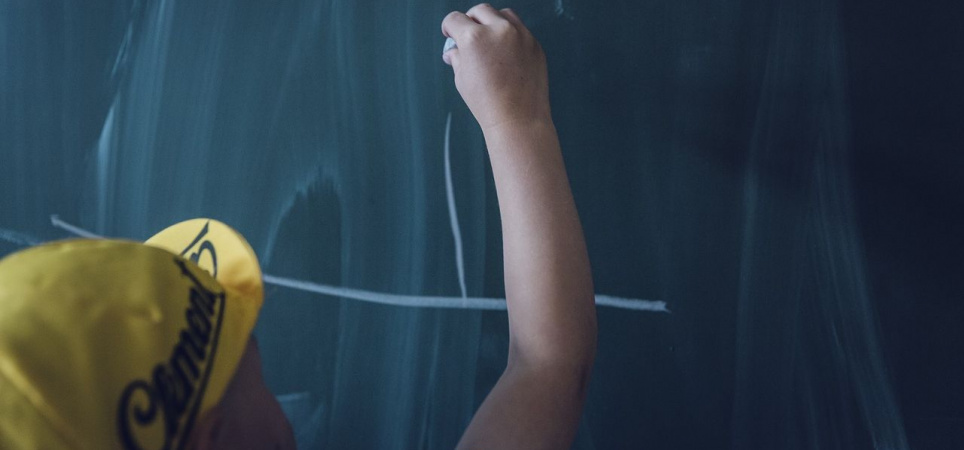
Image: Pixabay
Reports that special education (so) and special primary education (sbo) have grown again this school year, as recently appeared in some media and education minister Arie Slob wrote in a Letter to Parliamentonly tell part of the story. For a better insight into developments in appropriate education, it pays to look beyond that national picture.
Nearly thirty of the 77 partnerships in primary education have seen SO shrink faster than regular primary education since the introduction of appropriate education in 2014. In secondary special education (vso), this number is 35 out of 75. In other parts of the country, especially in the Randstad and North Brabant, (v)so and sbo grew considerably.
Pupil development in special secondary education (VSO) 2014-2018:
(Click on a region in the map above for more information on student development.)
The shrunken schools for (v) so and sbo in the south, southwest, east and north of the country together count thousands of students less compared to 2014, according to an analysis of OCW data and additional figures that DUO asked the Education magazine provided.
Over the past four years, SO has shrunk by more than XNUMX students, SBO and VSO both by just under XNUMX students.
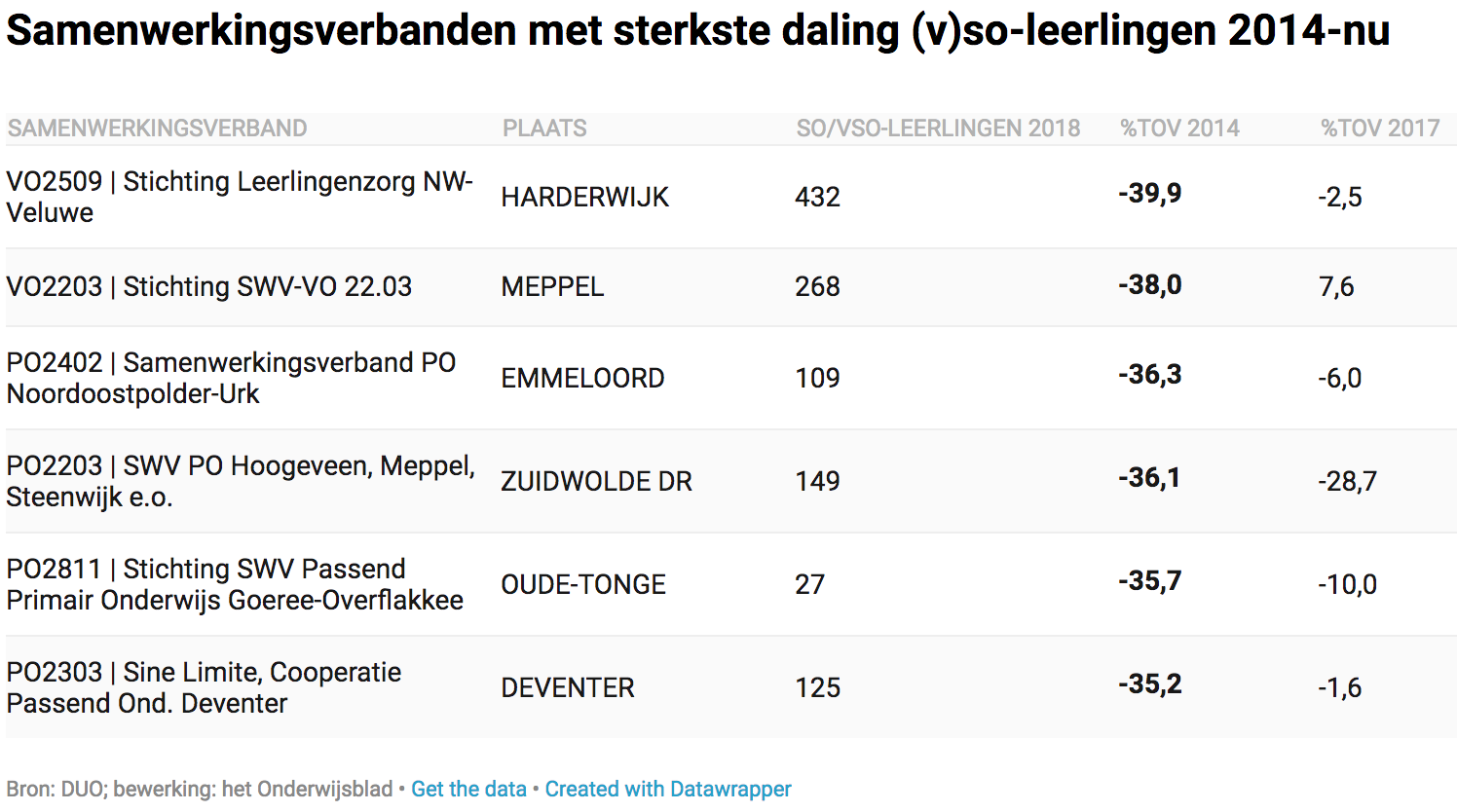
In regions with shrinking SO schools, two out of three times there was a growth in SBO, which can offer students more support than a regular primary school. Eleven partnerships show a relative shrinkage of both so and sbo.
reservations
At the same time, between 2015 and 2017, financial reserves also grew in these regions, particularly in the vso. For example, the 35 regions with shrinking VSO schools saw their joint equity increase by 18 million euros to 48 million euros. The 29 regions with shrinking secondary education schools saw their combined assets increase by about seven million euros to 32 million euros.
For example, the 35 regions with shrinking primary secondary schools saw their joint equity increase by 18 million euros to 48 million euros.
At the end of 2017, the vast majority of partnerships in primary and secondary education had a more than generous financial position. Recently, a visualization in the Education magazine showed 'How rich is my partnership?that money is left on the shelf all over the country.
Declining income
The so-called financial equalization comes into play, particularly in the regions with the strongest shrinkage in secondary and secondary education - where there are up to forty percent fewer students. A significant part of these regions is seeing revenues shrink. This is the result of a national redistribution of the support budget, which is particularly painful in the south and east of the country. In the west, many partnerships actually receive extra money.
Collaborations with a declining budget are struggling with their policy and business operations: they anticipate a smaller budget and have - partly - built up reserves to ease the transition.
In some parts of these regions a change has been seen since last school year: after years of contraction, the (V) SO and SBO are growing again. The trend is that more and more partnerships now see the number of special needs students rising again.
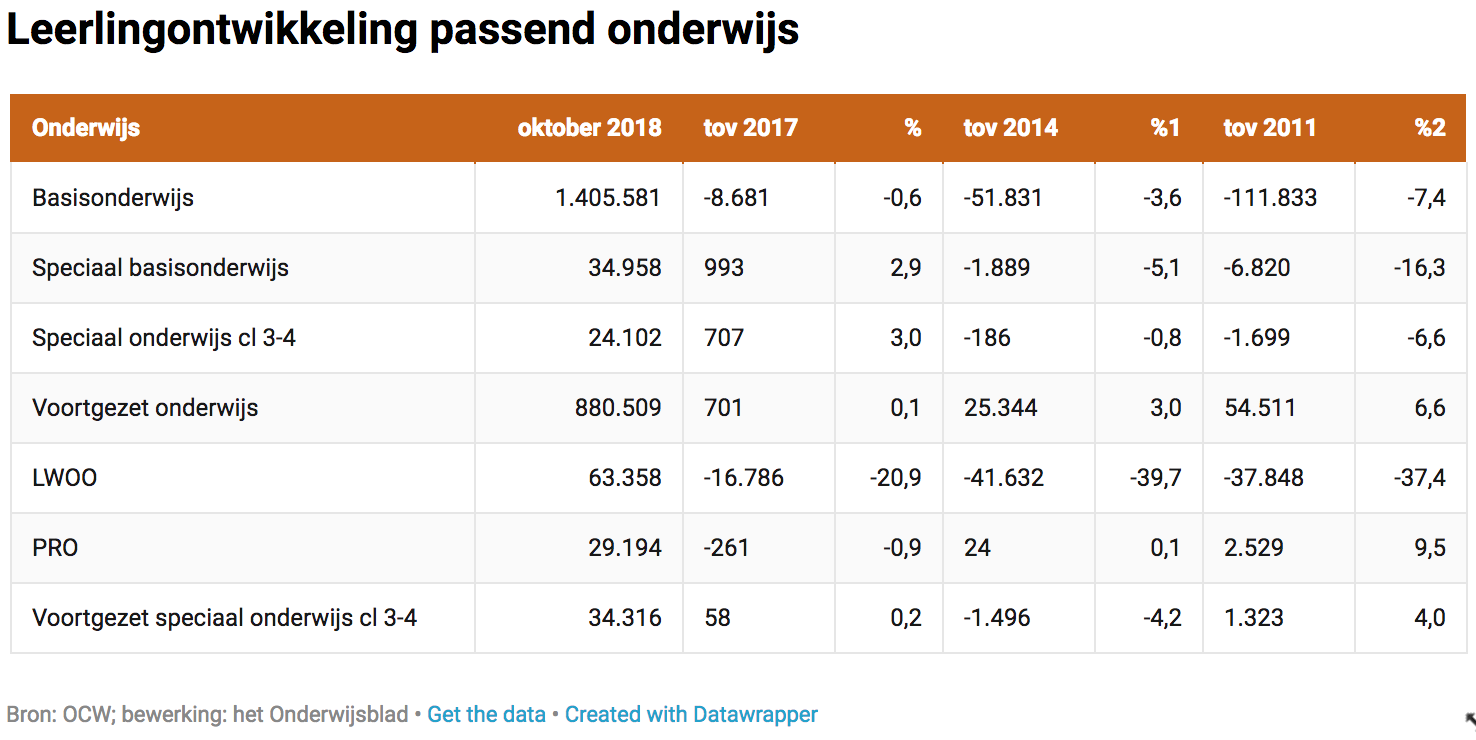
Rural image
After four years of appropriate education, the number of pupils under the direction of regional partnerships in special education (SO) has practically returned to the level of the starting year 2014. Increasing growth since the last school year has almost offset an earlier decrease.
Regional partnerships are solely responsible for clusters 3 and 4 of special education. These are students with mental or physical disabilities, a chronic illness, behavioral or developmental disorders or psychiatric problems. Clusters 1 and 2, for pupils who have difficulty hearing or seeing, are referred via a national system.
SBO has also grown again, but still has just under 2014 fewer pupils than in 1.500. VSO remained virtually stable this year, but has 2014 fewer pupils than in XNUMX.
Within special education as a whole (both SO and VSO), a clear shift can be seen: fewer pupils receiving support in the highest funding category (category three) and more pupils in the middle support category. The vast majority of ST students fall and fell in the first, lightest support category.
Politics
At the Ministry of Education, they will examine the recent growth of SO and SBO. In response to the figures, Minister Slob wrote to the House of Representatives that he will also look at regional differences next spring. 'Schools, teachers, parents and partnerships may find that more pupils receive more appropriate support in special (primary) education.'
If you see in practice that only part of the children have been helped, that there is also a large group of children for whom no provision can be arranged, that the number of home sitters is not falling or hardly falling, then something is going wrong.
A final evaluation is planned in the course of 2020 to review the first six years of appropriate education. Some parties, including the SP, think that this is much too late. The largest coalition party VVD is also increasingly critical.
In an interview in the February issue of the Education magazine says VVD MP Rudmer Heerema about appropriate education: "I see that it just doesn't work in practice. On paper it might look very good. If you see in practice that only some of the children have been helped, that there are also there is a large group of children for whom no provision can be made, that the number of home sitters does not or hardly decrease, then something goes wrong And then you can do two things: stick to the system and fine-tune it a bit, or start over again because the system does not offer enough in practice. I am increasingly in the position that we should do the latter."
Explanation: The Education Magazine compared the percentage pupil development of SO, SBO and VSO with that in regular primary and secondary education. Online databases were used and extra information about secondary education was requested from DUO. Due to an error at DUO, a merger between two partnerships (PO2901 and PO2902 to be precise) turned out to be incorporated in sbo and primary education, but not in so. Furthermore, a partnership has been added in secondary education since last year. Figures are available for the current school year, but not for previous ones. These three partnerships have not been taken into account in this analysis.
Read more:
Financial reserves
3-12-2018 Financial reserves are a cause for concern for education ministers
30-11-2018 How rich is my partnership?
28-10-2018 Partnerships are left with 32 million euros
5-12-2017 Appropriate education reserves grew throughout the country
1-12-2017 Transparency of appropriate education leaves something to be desired
1-12-2017 Partnerships see reserves growing
Pupil development
21-6-2018 More than 22 thousand VMBO students with a Lwoo backpack less
12-4-2018 How the growth of special education announced itself
8-2-2018 Special education is growing in the Randstad and Brabant
16-11-2017 So it grows, vso shrinks
Teacher shortage (f) so / sbo
29-1-2019 'Whole special primary education to four days'
30-5-2018 Schools of secondary special education are sounding the alarm
20-2-2018 Difference in salary puts pressure on special secondary education
